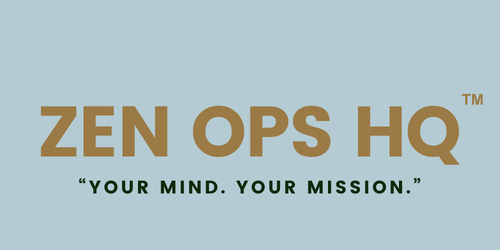
The Science of Breathwork: Evidence-Based Techniques for Emotional Regulation
Introduction
Breathwork has emerged as a powerful, evidence-based tool for emotional regulation, offering immediate and long-term benefits for mental health and well-being. This practice, rooted in ancient traditions and validated by modern neuroscience, provides accessible techniques that can be implemented anywhere, anytime.
The Science Behind Breathwork
Research demonstrates that controlled breathing directly influences the autonomic nervous system, particularly the vagus nerve, which plays a crucial role in emotional regulation. According to a study published in the Journal of Clinical Medicine (2020), slow, deep breathing activates the parasympathetic nervous system, reducing cortisol levels and promoting a state of calm¹.
Dr. Andrew Huberman's research at Stanford University shows that specific breathing patterns can rapidly shift our physiological state, moving us from stress to relaxation in as little as 5 minutes². The physiological sigh, in particular, has been shown to be the fastest way to calm the nervous system.
Benefits of Breathwork for Emotional Regulation
Immediate Benefits:
- Rapid stress reduction
- Decreased anxiety and panic symptoms
- Improved focus and mental clarity
- Enhanced emotional awareness
- Better sleep quality
Long-term Benefits:
- Increased emotional resilience
- Better stress management
- Improved heart rate variability
- Enhanced overall well-being
- Stronger mind-body connection
Evidence-Based Breathwork Exercises
1. The Physiological Sigh (Huberman Protocol)
How to perform:
- Sit or stand comfortably with your spine straight
- Take a normal inhale through your nose
- When you think you've inhaled fully, take a second, smaller inhale through your nose (this is the key component)
- Exhale slowly and completely through your mouth
- Repeat 1-3 times as needed
When to use: During acute stress, anxiety, or when you need immediate calming.
Scientific basis: This technique maximally inflates the alveoli in the lungs, sending the strongest possible signal to the brain to activate the parasympathetic nervous system.
2. Box Breathing (4-4-4-4 Pattern)
How to perform:
- Sit comfortably with your back straight
- Exhale completely through your mouth
- Inhale through your nose for 4 counts
- Hold your breath for 4 counts
- Exhale through your mouth for 4 counts
- Hold empty for 4 counts
- Repeat for 4-8 cycles
Visualization: Imagine tracing the sides of a square as you breathe - up on the inhale, across on the hold, down on the exhale, across on the empty hold.
When to use: Before important meetings, during work breaks, or when you need to center yourself.
3. 4-7-8 Breathing (Relaxation Response)
How to perform:
- Place the tip of your tongue against the ridge behind your upper teeth
- Exhale completely through your mouth
- Close your mouth and inhale through your nose for 4 counts
- Hold your breath for 7 counts
- Exhale through your mouth for 8 counts (making a whoosh sound)
- Repeat for 3-4 cycles initially, building up to 8 cycles
When to use: Before sleep, during high anxiety, or when you need deep relaxation.
Scientific basis: Developed by Dr. Andrew Weil, this technique is based on pranayama practices and helps reset the nervous system by extending the exhale phase.
4. Coherent Breathing (5-5 Pattern)
How to perform:
- Sit or lie down comfortably
- Breathe in through your nose for 5 seconds
- Breathe out through your nose for 5 seconds
- Continue for 5-20 minutes
- Aim for about 6 breaths per minute
When to use: Daily practice for building emotional resilience and improving heart rate variability.
Implementation Guidelines
Getting Started:
- Begin with 5-10 minutes daily
- Choose a consistent time (morning or evening works well)
- Start with simpler techniques like coherent breathing
- Use apps or timers to help maintain rhythm initially
Safety Considerations:
- Never force your breath or strain
- If you feel dizzy, return to normal breathing
- Pregnant individuals should consult healthcare providers
- Those with respiratory conditions should seek medical guidance
Integration with Daily Life
Breathwork is most effective when integrated into daily routines:
- Morning: 5 minutes of coherent breathing to set a calm tone
- Work breaks: Box breathing between meetings
- Stressful moments: Physiological sighs for immediate relief
- Evening: 4-7-8 breathing before sleep
Conclusion
Breathwork offers a scientifically-validated, accessible approach to emotional regulation that can be practiced anywhere, anytime. By incorporating these evidence-based techniques into your daily routine, you can build greater emotional resilience and improve your overall well-being.
Remember that consistency is key - even a few minutes of daily practice can yield significant benefits over time. Start small, be patient with yourself, and gradually build your practice as these techniques become more natural.
References
¹ Zaccaro, A., et al. (2018). How Breath-Control Can Change Your Life: A Systematic Review on Psycho-Physiological Correlates of Slow Breathing. Frontiers in Human Neuroscience, 12, 353.
² Huberman, A. (2022). The Science of Breathing and Its Effects on the Brain and Body. Huberman Lab Podcast, Stanford University.
³ Weil, A. (2011). Spontaneous Happiness. Little, Brown and Company.
⁴ Russo, M. A., et al. (2017). The physiological effects of slow breathing in the healthy human. Breathe, 13(4), 298-309.
Disclaimer: This content is for educational purposes only and is not intended as medical advice. Always consult with qualified healthcare professionals before beginning any new wellness practice, especially if you have pre-existing health conditions.

